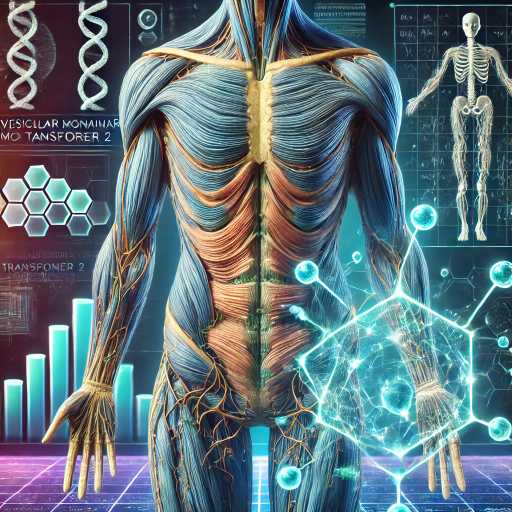Introduction:
Deep hypothermic circulatory arrest (DHCA) is a groundbreaking medical technique that involves inducing a temporary state of clinical death by cooling the body and halting blood circulation to all vital organs. This innovative approach to medical intervention has shown promising results in ensuring patient survival during complex surgical procedures and providing neuroprotection. By employing hypothermia as the primary method of cerebral protection, alongside various neuroprotective strategies such as pharmacological methods, glucose control, hemodilution, and acid-base management, the majority of patients have been able to tolerate up to 30 minutes of circulatory arrest at 18 degrees Celsius without experiencing significant neurological impairment. This article explores the intricacies of DHCA and its potential implications for medical advancements in the future.
Deep hypothermic circulatory arrest (DHCA) is a pioneering technique that involves deliberately inducing a state of temporary clinical death to facilitate complex surgical procedures and minimize the risk of neurological damage. By employing a combination of hypothermia and neuroprotective strategies, DHCA has emerged as a futuristic treatment modality with promising outcomes.
Temporary Death:
During DHCA, the patient’s body is cooled to a specific target temperature, typically around 18 degrees Celsius. This controlled cooling process reduces metabolic demands and slows down cellular activity, allowing for the temporary cessation of blood circulation. As a result, vital organs, including the brain, are protected from the potential damage associated with reduced blood flow and oxygen supply.
Neuroprotective Strategies:
- a) Hypothermia: Hypothermia is the cornerstone of cerebral protection during DHCA. By lowering the body’s temperature, the brain’s metabolic rate decreases, leading to reduced energy requirements and diminished cellular damage. The cooling process is carefully monitored to maintain optimal cerebral perfusion and prevent complications.
- b) Pharmacological Methods: Various pharmacological agents, such as neuroprotective drugs, can be administered before, during, and after DHCA to further enhance the brain’s resilience to ischemia. These drugs may act through mechanisms such as reducing inflammation, preventing oxidative stress, and modulating excitotoxicity.
- c) Glucose Control: Maintaining appropriate glucose levels is crucial during DHCA, as both hypoglycemia and hyperglycemia can exacerbate neuronal injury. Strict glucose management protocols are employed to ensure optimal brain function and minimize the risk of neurological impairment.
- d) Hemodilution: Hemodilution is a technique used to reduce blood viscosity and improve microcirculation during DHCA. By diluting the patient’s blood with a balanced electrolyte solution, the risk of clot formation and subsequent ischemic events is minimized.
- e) Acid-Base Management: Maintaining proper acid-base balance is essential for preserving cellular function and minimizing brain injury during DHCA. Careful monitoring and adjustment of pH levels are performed to prevent acidosis or alkalosis, which can have detrimental effects on neuronal integrity.
Clinical Outcomes:
Studies have demonstrated that the majority of patients undergoing DHCA can tolerate up to 30 minutes of circulatory arrest without significant neurological deficits. The careful application of hypothermia and neuroprotective strategies has contributed to improved patient outcomes, reducing the risk of postoperative cognitive dysfunction and other neurological complications.
Future Implications:
The development of DHCA as a therapeutic technique holds immense potential for the future of medical interventions. As technology advances, refinements in cooling methods, neuroprotective agents, and monitoring techniques are likely to further enhance patient outcomes and expand the applications of DHCA. Additionally, ongoing research aims to elucidate the optimal duration of circulatory arrest and identify new strategies to mitigate potential complications.
Comparing DHCA to other neuroprotective techniques in terms of effectiveness and patient outcomes requires a comprehensive evaluation of available research and clinical data. While DHCA has shown promising results, it is essential to consider its relative efficacy in comparison to other approaches. Here, we examine some commonly employed neuroprotective techniques and their potential outcomes when compared to DHCA:
Hypothermia Alone:
Hypothermia alone, without inducing circulatory arrest, is a well-established neuroprotective technique used in various clinical settings. It involves cooling the body to lower temperatures, typically between 32-34 degrees Celsius. While hypothermia can effectively reduce metabolic demands and decrease neuronal injury, it may not provide the same level of neuroprotection as DHCA during complex surgical procedures or extended periods of circulatory arrest.
Pharmacological Neuroprotection:
Pharmacological agents, such as neuroprotective drugs, are administered to enhance cerebral protection. These medications may act through mechanisms such as reducing inflammation, preventing oxidative stress, and modulating excitotoxicity. While pharmacological neuroprotection can be effective in certain scenarios, its efficacy may vary depending on the specific drugs used, the timing and duration of administration, and individual patient factors.
Glucose Control:
Maintaining optimal glucose levels is crucial for neuroprotection. Both hypoglycemia and hyperglycemia can exacerbate neuronal injury. Strict glucose control protocols are employed to minimize the risk of neurological impairment. However, while glucose control is an essential aspect of neuroprotection, it is typically used in conjunction with other techniques, including DHCA, rather than as a standalone method.
Hemodilution:
Hemodilution, the dilution of blood with a balanced electrolyte solution, aims to improve microcirculation and reduce blood viscosity. By enhancing blood flow, hemodilution can contribute to neuroprotection during circulatory arrest. However, its effectiveness as a standalone technique, in comparison to DHCA, is limited.
Acid-Base Management:
Proper acid-base balance is crucial for preserving cellular function and minimizing brain injury. Effective management of pH levels helps prevent acidosis or alkalosis, which can have detrimental effects on neuronal integrity. While acid-base management is an integral part of neuroprotection, it is typically employed alongside other techniques, including DHCA.
When comparing DHCA to these neuroprotective techniques, it is important to note that DHCA integrates multiple strategies, including hypothermia, pharmacological methods, glucose control, hemodilution, and acid-base management. This comprehensive approach aims to provide enhanced cerebral protection during surgical procedures that necessitate temporary circulatory arrest.
While each technique has its merits and specific applications, DHCA has shown favorable outcomes in terms of patient tolerance to circulatory arrest and reduced neurological impairment. Studies have demonstrated that the majority of patients can tolerate up to 30 minutes of circulatory arrest at 18 degrees Celsius during DHCA without significant neurological deficits. However, the choice of neuroprotective technique depends on the specific clinical context, patient characteristics, and the expertise of the medical team.
It is important to emphasize that the effectiveness and patient outcomes of neuroprotective techniques can vary significantly depending on individual cases and the underlying medical conditions. Therefore, a comprehensive evaluation of available evidence, consultation with medical professionals, and consideration of patient-specific factors are crucial for determining the most appropriate neuroprotective approach in any given situation.
There are ongoing studies and advancements in DHCA aimed at further improving its effectiveness and outcomes. Researchers and medical professionals are continually exploring new strategies and technologies to optimize DHCA and enhance patient care. Some areas of ongoing research and potential advancements include:
Duration of Circulatory Arrest:
Determining the optimal duration of circulatory arrest during DHCA is an active area of research. Studies are investigating the safe limits of circulatory arrest and exploring ways to extend the duration without compromising neurological outcomes. This research aims to expand the potential applications of DHCA to more complex surgical procedures that may require longer periods of circulatory arrest.
Cooling Methods:
Refinements in cooling techniques and technologies are being explored to achieve more precise and controlled cooling during DHCA. This includes the development of advanced cooling devices, such as intravascular cooling catheters or surface cooling systems, that can maintain target temperatures more effectively and minimize temperature fluctuations. These advancements aim to improve the reliability and efficiency of the cooling process during DHCA.
Neuroprotective Agents:
Ongoing research focuses on identifying and optimizing the use of pharmacological neuroprotective agents during DHCA. Scientists are investigating novel drug therapies that can enhance cerebral protection, reduce inflammation, mitigate oxidative stress, and modulate excitotoxicity more effectively. The development of targeted neuroprotective agents tailored specifically for DHCA procedures is a promising area of investigation.
Monitoring Techniques:
Advanced monitoring techniques are being developed to provide real-time assessment of cerebral perfusion and neurologic status during DHCA. These may include advanced imaging modalities, biomarkers, or neurological monitoring devices that can accurately assess brain function and detect any potential complications. Improved monitoring capabilities will enable medical teams to optimize DHCA management and intervene promptly if necessary.
Individualized Approach:
The development of personalized medicine and tailored treatment approaches is gaining attention in the field of DHCA. Researchers are exploring the use of patient-specific factors, such as genetic variations or pre-existing conditions, to optimize neuroprotection during DHCA. This individualized approach aims to maximize the effectiveness of DHCA while minimizing the risk of complications and optimizing patient outcomes.
It is worth noting that while these advancements show promise, further research and clinical trials are needed to validate their effectiveness and establish best practices. The field of DHCA is dynamic, and ongoing studies continue to shape its future by refining techniques, exploring new technologies, and improving patient outcomes.
Conclusion:
Deep hypothermic circulatory arrest (DHCA) represents a futuristic treatment approach that temporarily induces clinical death to safeguard patients undergoing complex surgical procedures. By utilizing hypothermia and a range of neuroprotective strategies, DHCA has demonstrated remarkable success in preserving neurological function and minimizing adverse outcomes. As medical advancements continue to evolve, DHCA holds great promise for revolutionizing patient care and contributing to the frontier of medical science.
DHCA: Innovative Technique for Temporary ‘Death’& Neuroprotection in Medical Care
#Health #care #science #Tech #disruption #drsanjayrout #life #change #spiritual #cosmology #biology #viral #reel #shorts #audio #video #nft #metaverse













